Sign Up For An Upcoming Webinar Or Watch Recordings Of Past Webinars
This webinar focuses on what being proactive really means and how seeing the reality of our environment and work that our people do is key to taking the actions necessary in advance of an incident occurring. We will examine how being visually literate helps us to see hazards in the workplace that have become so familiar we no longer see them - until the incident occurs. We will discuss the linkage between visual literacy and common safety processes including hazard recognition, prevention through design, serious injury and fatality prevention, and others.


Many BBS and observation processes have become standard processes driven primarily by checklists. Over-reliance on these checklists to guide observations can introduce visual biases or limits to what we see and the interpretations that we make. Absent continuous improvement in the BBS and observation processes, BBS can become stale and less impactful than desired. This webinar shares how using Visual Literacy tools to assess behaviors and when needed correct at-risk behaviors is a more challenging, more fluid and dynamic scenario than merely looking for hazardous physical conditions.

Most of the incidents that occur in our organizations are minor, but the spectrum of potential outcomes is much broader. Many of the hazards that we encounter have existed for a long time and we work around them everyday. We become so used to them we no longer see them - until the incident occurs. Poor situational awareness or higher than desired risk tolerance is often identified as contributing factors. But how can our risk management processes be effective if our hazard identification capabilities are compromised by our inability to see the hazards around us and communicate effectively about what we see?
Is your Behavior-Based Safety program in need of a refresh? Is it growing stale or have your employees grown complacent towards it? Visual Literacy offers organizations a fresh, fun experience that is unique and can breathe new life into your Behavior-Based Safety Process. Using Visual Literacy tools (look, observe, see, describe, analyze, interpret and communicate) to assess behaviors and when needed correct at-risk behaviors is a more challenging, more fluid and dynamic scenario than merely looking for hazardous physical conditions.

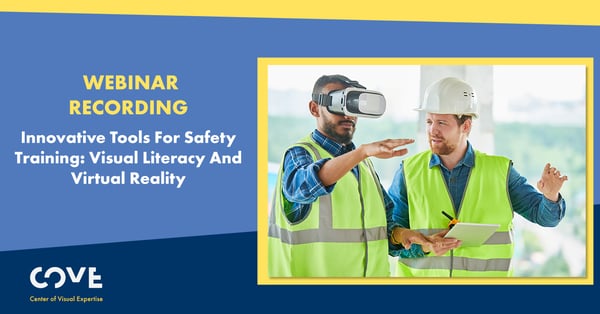
COVE: Center of Visual Expertise along with 360 Immersive are presenting impactful critical thinking skills and technology forward solutions to address these critical needs. In this webinar Doug Pontsler, COVE Chairman and Managing Director, and Jennifer Lastra, CEO of 360 Immersive, will share how visual literacy and virtual reality can provide new and interesting ways to develop and engage employees, making their work environments safer.
At any given moment we only see as little as 10 percent of what we think we’re seeing; up to 90 percent is filled in by our brain. This innate mechanism for coping with visual stimuli can lead to missing or underestimating hazards, as well as leading to errors that are caused by bias, assumptions (pre-cognitive commitment), and miscommunication. We need a clear picture of our hazard inventory and risk profile so appropriate preventive and protective measures are developed and implemented before harmful, possibly serious events occur. This webinar shares ideas on how Visual Literacy can help in identifying hazards that allows us to then assess their risk potential and bring clarity to what might harm our workers as well as damage property.
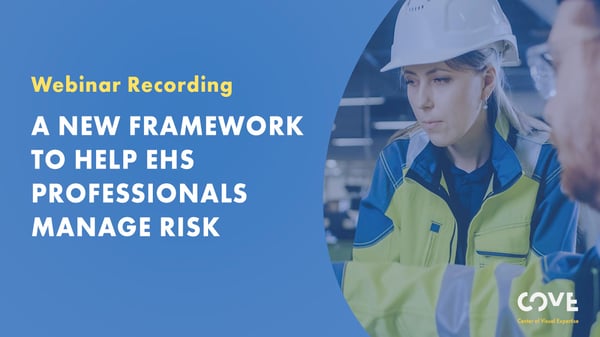
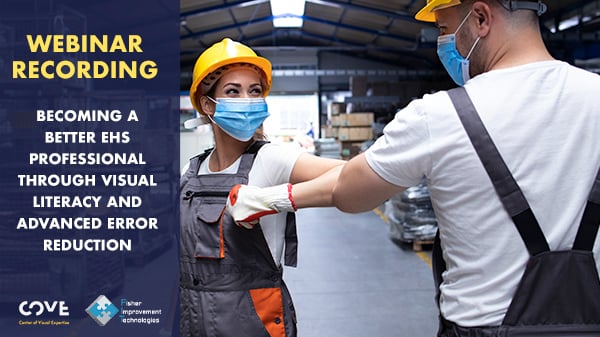
In this ongoing series we share how Visual Literacy and Advanced Error Reduction can help fill the gaps in our ability to think critically, simplify complexity, and improve our communication. Applying tools and techniques originating in art education and in human and organizational performance extends our capabilities beyond technical knowledge and makes us a better EHS professional.
Did you know that individuals with different personality tendencies see and manage risk differently? That sounds obvious but being aware of and managing our personality tendencies and how they impact our view of risk is the next logical step in preventing, reducing, and mitigating errors and incidents. Visual Literacy helps us each manage how we can better identify and manage risks that may not be obvious based on how our personality type and our tendencies usually see them. Join us for this discussion of the next generation of HOP and Safety.
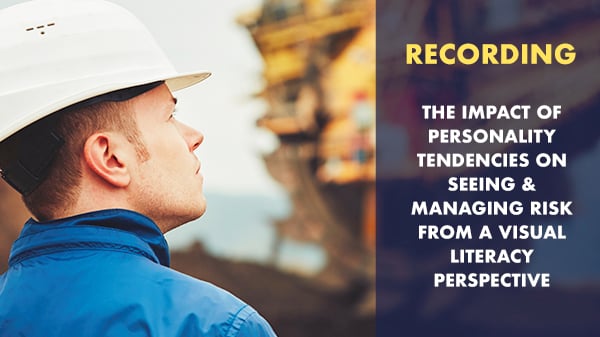
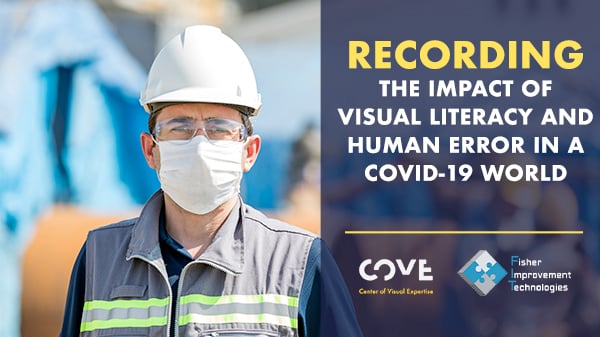
As we continue to operate in a world that is impacted by COVID-19, we run the risk that our brains have not shifted to what we now need to see. What may be viewed as compliance issues with continually changing COVID-19 related rules may not be intentional but rather human error as we struggle to see the new realities of our work and home environments. This webinar looks at the role of visual literacy and human performance in addressing Coronavirus risk in the workplace and at home.


In this webinar we discuss being more effective in seeing hazards in the workplace and sharing four critical support mechanisms for interpreting and acting on the hazards we find. Learn more about how to take an inventory of the hazards you discover, how to focus on containing hazards until they are properly controlled or eliminated, and finally critical communication and measurement techniques.
